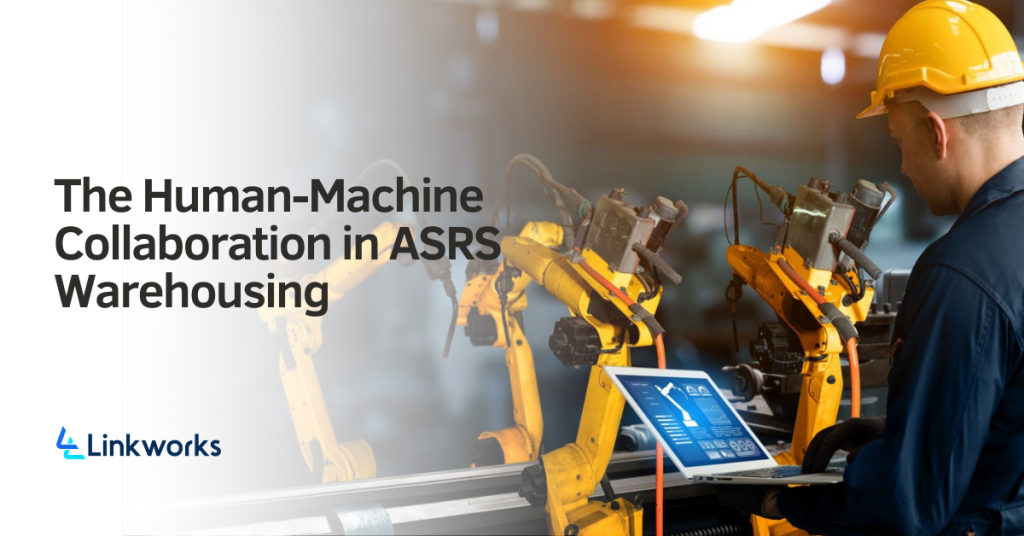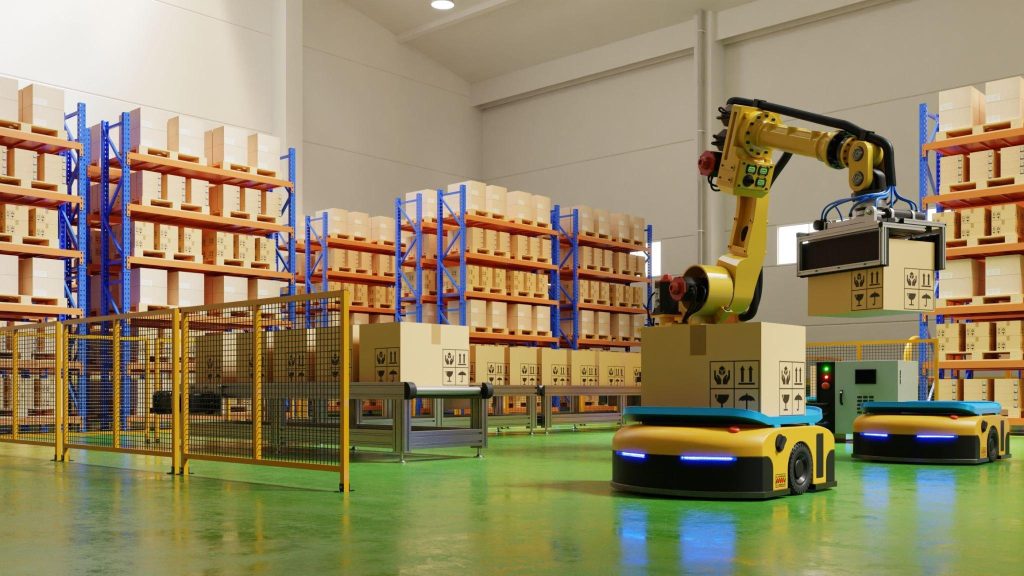The Human-Machine Collaboration in ASRS Warehousing

Introduction
In the era of rapid technological advancement, the logistics and supply chain industry are not left behind. Let’s enter the exciting world of Automated Storage and Retrieval Systems (ASRS) warehousing, where humans and machines collaborate to redefine efficiency and productivity. ASRS utilizes advanced technology such as robotics, conveyors, sensors, and data analytics to streamline warehouse operations and enhance efficiency. In this blog post, we’ll take a deep dive into the fascinating realm of ASRS warehousing and explore the symbiotic relationship between humans and machines that’s reshaping the future of supply chain logistics.
The Rise of ASRS Warehousing
ASRS technology represents a major leap forward in warehouse automation. ASRS is a type of warehouse technology where goods are automatically placed and retrieved from specific locations within a warehouse. This system uses various computer-controlled systems for automatically placing and retrieving loads from defined storage locations.
Streamlined Inventory Management
Automated Storage for Seamless Organization
ASRS employs automated storage systems that efficiently organize and manage inventory. The system utilizes advanced algorithms to identify the optimal storage location for each item, ensuring maximum space utilization and easy accessibility.
Real-time tracking and Data Analytics
By integrating sensors and data analytics, ASRS allows for real-time tracking of inventory within the warehouse. This enables warehouse managers to monitor stock levels, track order fulfillment progress, and make data-driven decisions to optimize inventory management.
Walmart uses real-time tracking and data analytics to improve inventory management by using RFID (Radio-frequency identification) tags to track the movement of goods throughout its supply chain. This data allows Walmart to track the location of inventory in real time and to identify products that are running low in stock. Walmart can then take steps to replenish inventory before it runs out. And also uses sensors to track customer traffic and product movement in its stores. This data allows Walmart to identify areas of its stores where customers are spending more time and to identify products that are in high demand. Walmart can then use this information to improve the layout of its stores and to make sure that it has enough of the right products in stock.
Reduced Error Rates and Improved Inventory Accuracy
Human-machine collaboration in ASRS minimizes the risk of human error in Inventory Management. This leads to improved inventory accuracy, reducing the occurrence of stockouts, misplaced items, and inaccuracies in the supply chain. Here Amazon now uses machine learning to automate inventory counting. This has helped Amazon to reduce error rates by up to 90%.
Similarly, Walmart uses a “pick-to-light” system in some of its stores to reduce picking errors. In this system, lights are illuminated above the storage locations of products that need to be picked. This helps pickers quickly and accurately identify the products they need to pick.
Automated Retrieval for Improved Order Fulfillment
Speed and Precision in Picking and Packing: ASRS enables fast and precise order fulfillment through the automation of retrieval processes. Robots or automated mechanisms swiftly locate and retrieve the required items, significantly reducing the time required for order processing.
Optimal Space Utilization and Inventory Rotation: Human-machine collaboration in ASRS warehouses allows for optimal space utilization. ASRS systems intelligently manage inventory placement, ensuring items are strategically rotated to maintain product quality and reduce the risk of obsolescence.
Fulfilling Dynamic Customer Demands: The ability to quickly adapt to customer demands is crucial in today’s rapidly changing market. Human-machine collaboration in ASRS warehouses enables businesses to fulfill dynamic customer demands efficiently, providing a competitive edge in the industry.
The Human Touch
While the term ‘automated’ might suggest a fully machine-operated system, humans play a crucial role in the functioning of an ASRS warehouse. They are responsible for overseeing the operations, ensuring the machines are functioning correctly, and intervening when necessary.
Humans also play a vital role in the maintenance and repair of automated systems. They ensure that the machines are in good working condition, carry out regular checks, and perform necessary repairs or replacements.
While machines excel in repetitive tasks, humans possess invaluable problem-solving skills and expertise to handle complex decision-making. ASRS systems continuously learn from human input and adapt to changing warehouse requirements. This dynamic collaboration ensures that the system remains optimized, enabling warehouses to stay competitive in an ever-evolving industry.
The Perfect Collaboration
The collaboration between humans and machines in an ASRS warehouse is a perfect example of how technology can enhance human capabilities. While machines bring speed, efficiency, and accuracy, humans ensure smooth operations, maintenance, and decision-making based on their judgment and experience.
This synergy leads to increased productivity, reduced errors, and a safer working environment, making ASRS a game-changer in the warehousing industry.
Let’s see a glimpse at how Amazon streamlined inventory management
In the past, Amazon employees would have to walk around the warehouse to pick and pack orders. This was a time-consuming and inefficient process. Amazon now uses ASRS systems to pick and pack orders. This has helped Amazon to improve the speed and accuracy of order fulfillment by up to 50%. Amazon’s inventory management system is one of the most efficient and sophisticated in the world.
Drawbacks of ASRS Warehousing
Despite its numerous advantages, ASRS warehousing also has some drawbacks:
High Initial Investment: The initial cost of setting up an ASRS warehouse can be high, making it a significant investment for businesses. The initial investment in an ASRS warehouse can vary widely depending on the specific needs of your operation and the type of ASRS system you choose. Here are some average investments for different types of ASRS systems,
- Vertical Carousel Modules: $70,000
- Horizontal Carousel Modules: $75,000
- Vertical Lift Modules: $95,000
- Vertical Buffer Modules: $300,000
- Mini-load ASRS: $750,000
- Unit-load ASRS: $1,000,000
- Multi-Shuttle: $1,000,000
- Robotic Cube Storage: $1,500,000
These costs can be influenced by several factors, including the size of the system, the environment it operates in, and the physical size and weight of the inventory
Technical Issues: Any technical issues or breakdowns in the automated systems can disrupt the entire warehouse operations.
Lack of Flexibility: ASRS warehouses are designed for specific types of goods and operations. Any changes in the product line or operations may require significant modifications to the system.
Dependency on Electricity: ASRS warehouses are heavily dependent on electricity. Any power outages can lead to a halt in operations.
Conclusion
In conclusion, the human-machine collaboration in Automated Storage and Retrieval Systems (ASRS) warehousing is not just about replacing humans with machines. Instead, it’s about creating a system where both can work together, leveraging their strengths to increase efficiency and productivity. It’s about creating a future where humans and machines coexist and collaborate for a common goal.
I trust that this blog post is beneficial and fulfills your needs for assistance!
Mail me, if in case any queries strike it out, and I will be happy to reply to you!!!

